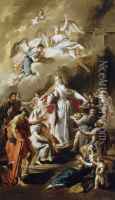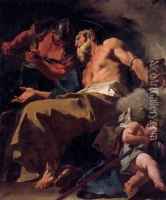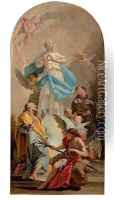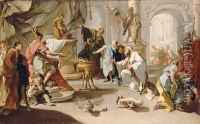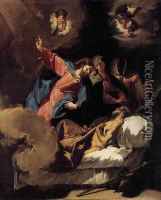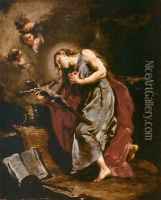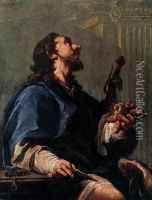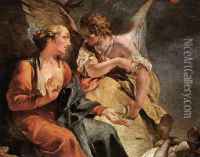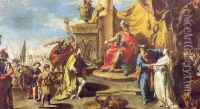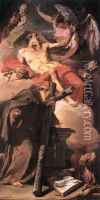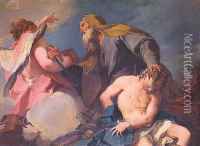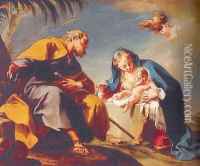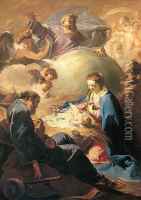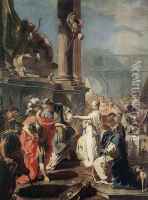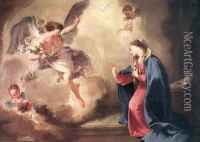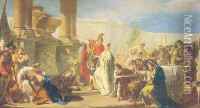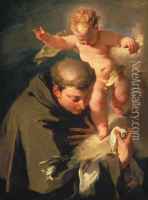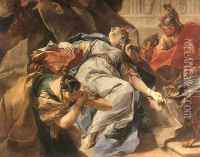Giovanni Battista Pittoni the younger Paintings
Giovanni Battista Pittoni the Younger was an Italian painter of the Venetian school and one of the most prominent and successful artists of his generation. He was born on June 6, 1687, in Venice, Italy, and was part of a family with a long tradition of artists; his great-uncle, Francesco Pittoni, was also a notable painter. Pittoni is often associated with the grand style of history painting and was known for his large-scale religious and mythological works.
Pittoni's early training is not well-documented, but it is believed that he studied under his uncle, Francesco Pittoni, and possibly with Antonio Balestra. He quickly gained recognition for his artistic talents and became a member of the Fraglia dei Pittori, the Venetian painters' guild, in 1716. He was also a member of the prestigious Academy of Fine Arts of Venice, where he later served as a director.
Throughout his career, Pittoni was an influential figure in the Venetian art scene. His work was characterized by a refined use of color, graceful composition, and a delicate rendering of figures. He was particularly adept at manipulating light and shade to create dramatic effects. His style was influenced by the works of Paolo Veronese and the Bolognese school, yet he maintained a distinctive approach that earned him widespread acclaim.
Pittoni's reputation extended beyond Venice, and he received commissions from patrons across Europe, including Germany, Austria, and Poland. Some of his most famous works include 'The Baptism of Christ,' 'The Death of Sophonisba,' and 'The Vision of St. Anthony of Padua.' His paintings can be found in many major museums and collections around the world.
In addition to his painting, Pittoni was also engaged in the teaching of art. He had several students who would go on to become notable artists in their own right. Pittoni's influence on the Venetian art scene continued even after his death on November 6, 1767, in Venice, as his works and artistic philosophy were carried on by his students and followers.
Giovanni Battista Pittoni the Younger's contribution to the Venetian tradition and the broader Italian baroque movement cannot be overstated. His works are celebrated for their elegance, narrative clarity, and the harmonious interplay of colors, and they continue to be studied and admired by art historians and enthusiasts to this day.
